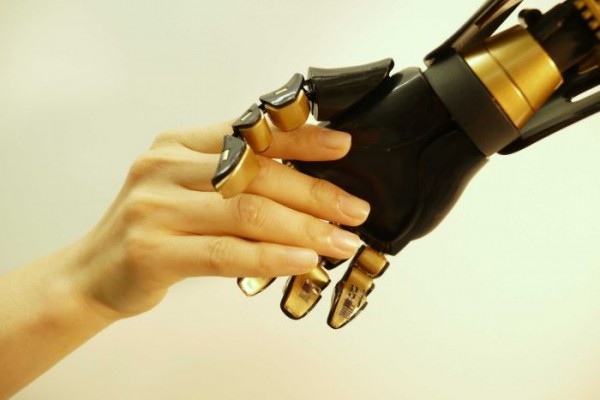Engineers Develop a More Responsive 'Digital Skin' for Prosthetic Limbs
| Benjie Batanes | | Oct 16, 2015 07:40 AM EDT |
(Photo : Bao Research Group, Stanford University) Researchers at Stanford University have developed a "digital skin" that is sensitive to touch.
A team of Engineers from Stanford University have successfully developed a "digital skin," which is equipped with a sensor that sends electrical signals to the brain once it comes into contact with an object.
Science Magazine has published the findings of the researchers as well as a brief summary of how they were able to achieve the feat.
Like Us on Facebook
The researchers claim that their digital skin design is by far the most responsive to touch compared to other earlier models. Experts say amputees who use prosthetic limbs will greatly benefit from this latest technology.
Senior designer Zhenan Bao said their sensor is mainly made of plastic that can communicate directly and successfully with the wearer's nervous system.
Earlier models were unable to connect successfully with the brain when they come in contact with objects.
To compensate for this shortcoming, many bionic limb models have been equipped with digital processors, which will tell the brain when an object is touched.
Bao said they were able to replace the complicated processor with a single circuit, which is responsible for directly "talking" to the brain.
Although the material used for the digital skin is made of plastic, Bao said it looks and works like a real skin. The sensor itself is filed with tiny carbon materials that sends electronic signals when pressure is applied.
The researchers used a method known as "optogenetics" to send the electrical signals to the brain by sending light to the nervous system. The team preferred to use a light as method of delivery since it cannot harm the brain's neurons.
Bao believes that many engineers and scientists are working on other designs that can work the same way or even better than their sensor.
Massachusetts Institute of Technology Professor Polina Anikeeva has commended the engineers for their use of optogenetics in their digital skin design.
She adds that the human brain and nervous system are very sensitive parts of the body, and optogenetics offers a safe and noninvasive way for wearers of prosthetic limbs to re-experience and react to the sense of touch.
Tagsdigital skin, aritificial skin, prosthetic limb, optogenetics, bionic hands, MIT, Standford University
©2015 Chinatopix All rights reserved. Do not reproduce without permission
EDITOR'S PICKS
-

Did the Trump administration just announce plans for a trade war with ‘hostile’ China and Russia?
-

US Senate passes Taiwan travel bill slammed by China
-

As Yan Sihong’s family grieves, here are other Chinese students who went missing abroad. Some have never been found
-

Beijing blasts Western critics who ‘smear China’ with the term sharp power
-

China Envoy Seeks to Defuse Tensions With U.S. as a Trade War Brews
-

Singapore's Deputy PM Provides Bitcoin Vote of Confidence Amid China's Blanket Bans
-

China warns investors over risks in overseas virtual currency trading
-

Chinese government most trustworthy: survey
-

Kashima Antlers On Course For Back-To-Back Titles
MOST POPULAR
LATEST NEWS
Zhou Yongkang: China's Former Security Chief Sentenced to Life in Prison

China's former Chief of the Ministry of Public Security, Zhou Yongkang, has been given a life sentence after he was found guilty of abusing his office, bribery and deliberately ... Full Article
TRENDING STORY

China Pork Prices Expected to Stabilize As The Supplies Recover

Elephone P9000 Smartphone is now on Sale on Amazon India

There's a Big Chance Cliffhangers Won't Still Be Resolved When Grey's Anatomy Season 13 Returns

Supreme Court Ruled on Samsung vs Apple Dispute for Patent Infringement

Microsoft Surface Pro 5 Rumors and Release Date: What is the Latest?













